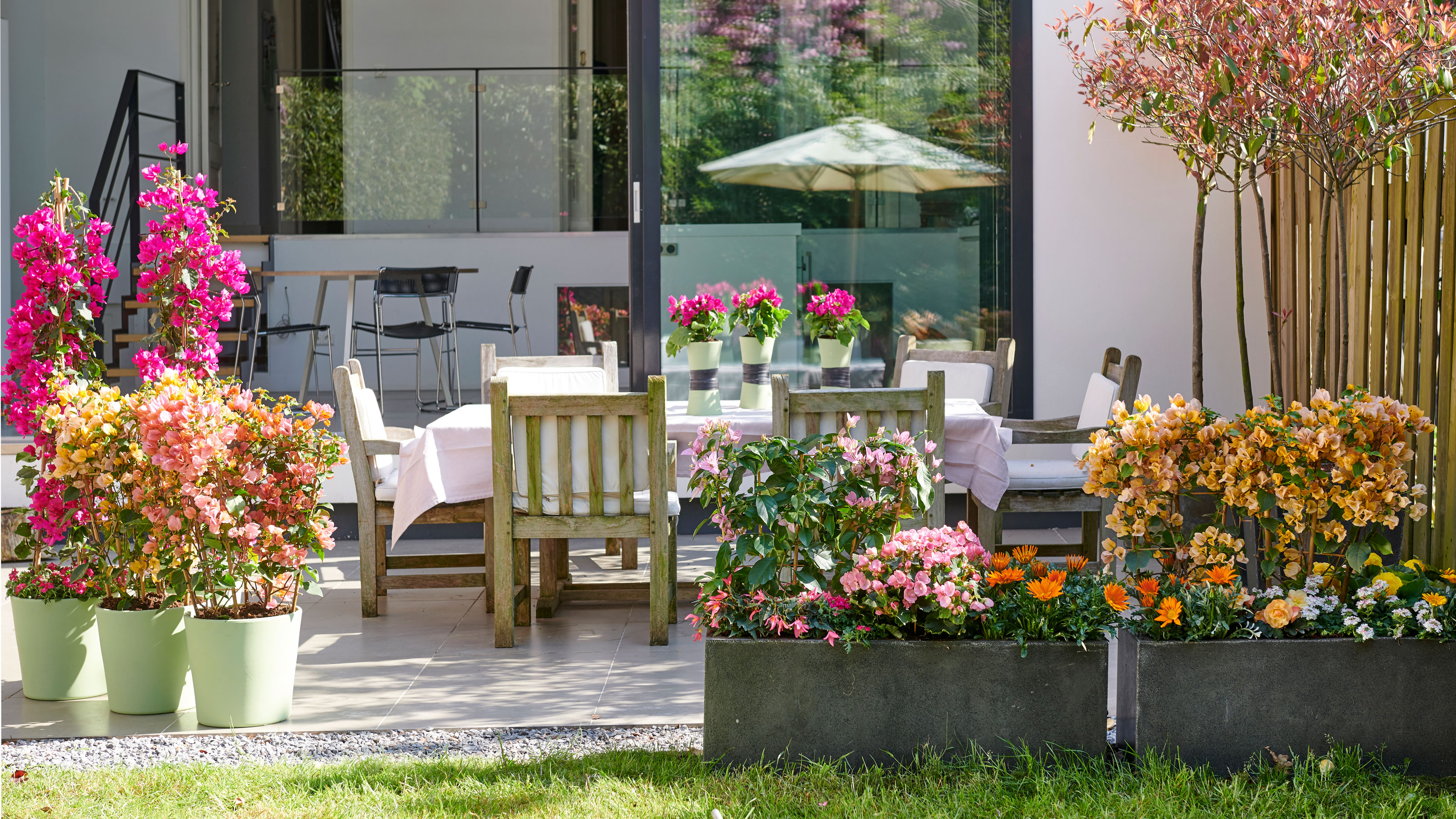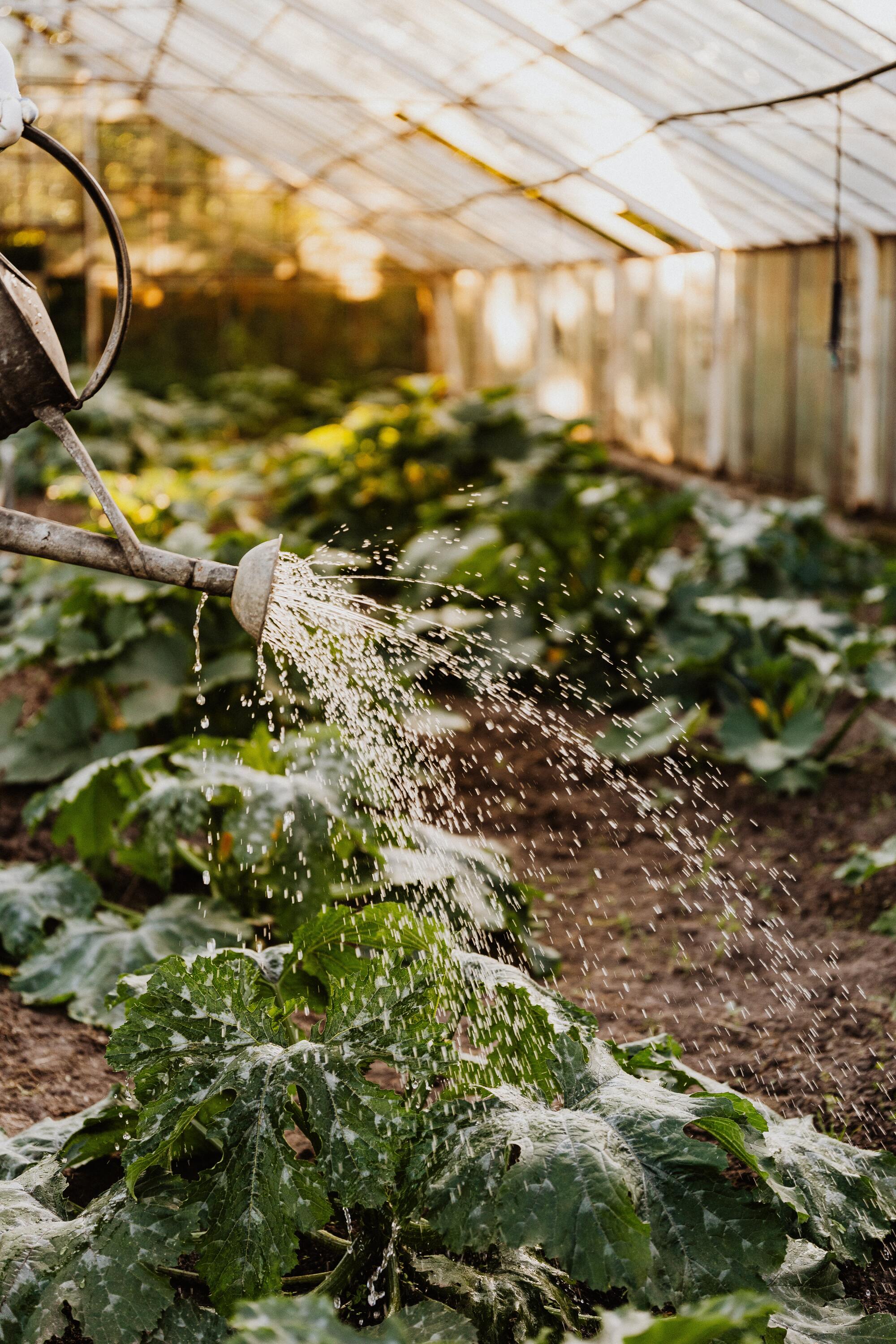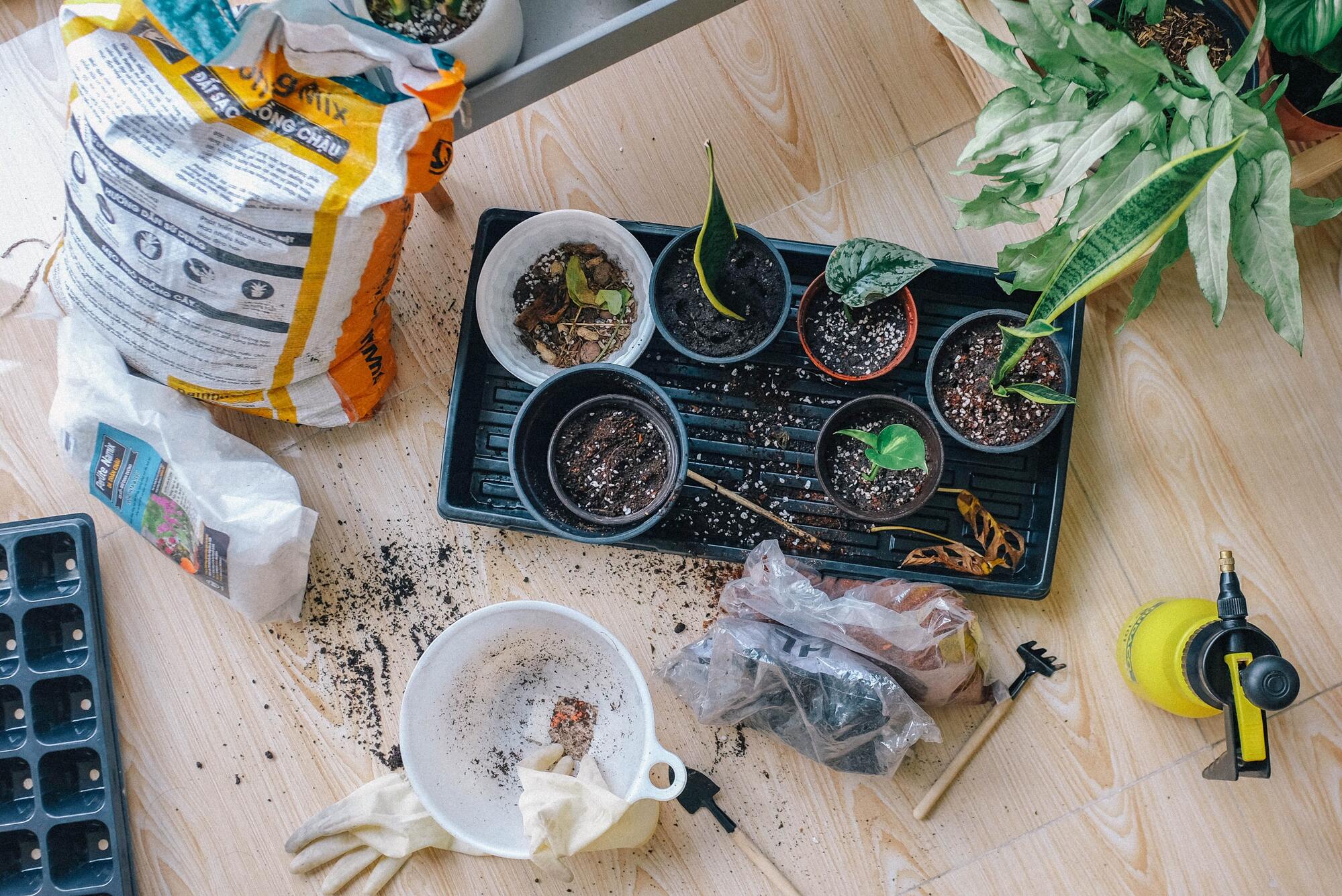When is the best time to water your garden?
We speak to the gardening experts to find out when is the best time to water your garden


Knowing when is the best time to water your garden is important, especially during the summer months to keep your plants healthy and happy.
There are many variables which mean timings change throughout the year. That means there's no one answer to this question, but there are simple tips you can adopt and follow to make sure your modern garden is healthy and blooms beautifully at different times of year.
'When watering your garden, timing is everything,' says Whitney Bromberg Hawkings, CEO of flower delivery service, FLOWERBX. 'Of course, gardens need different amounts of water throughout the seasons - depending on factors like rainfall and temperature - but there are simple rules you can follow to help your plants survive,' she says.
From windowsill plant pots to fully manicured landscaped gardens, we get to grips with garden watering and speak to some of the experts in the gardening field.
When is the best time to water your garden plants?
There is a peak time of day that is best for watering your plants. According to gardeners, the best time to water your garden is very early in the morning. 'That way, the water will soak in, and won't evaporate in the noonday sun, but it also won't sit around encouraging fungal growth, either,' says Camille Cimino, who has been doing A-list gardens in Los Angeles for more than 20 years.
Whitney from FLOWERBX agrees, and adds that morning watering can also work as an anti-pest method. 'The morning is when your plants will make use of it the most, as well as keeping the environment drier by the time that the temperature drops back down in the evening - helping to avoid bugs like slugs and snails.'
'You can also opt to water your plants in the evening in the warmer seasons, as less water will be lost to evaporation on those hot summer days,' she adds.
The Livingetc newsletters are your inside source for what’s shaping interiors now - and what’s next. Discover trend forecasts, smart style ideas, and curated shopping inspiration that brings design to life. Subscribe today and stay ahead of the curve.
How to know when you need to water your garden
Firstly, it's essential to be able to identify what the clear signs are that your garden needs watering, how to know when your garden has had not enough water and when it is overwatered.
'Different plants have different water needs,' explains Camille. 'So it's important to learn about what conditions a particular plant desires. For example, fig trees like to dry out between watering, but tomato plants need to be kept consistently, evenly moist.' There is no rule of thumb, so identifying and learning about your plant is the first step to ensuring a happy garden.
'But in general, drooping leaves even in cool morning or evening temperatures are not a good sign, and neither is dry, crumbly soil,' says Camille.
'With certain succulents, which store water in their plump leaves, if those leaves are no longer smooth and glossy but beginning to wrinkle, that's a sign they need water.
'Dig down a bit into the soil - sometimes the surface will be moist, but an inch below, it's dry. It's actually better to water deeply a few times per week than it is to do shallow watering daily.'
Finally, dry, crisp brown leaf tips are a sure sign of underwatering, 'but an overwatered plant will have similarly discolored and wilted leaves,' adds Camille, 'but not the same crisp feeling. They turn yellow or brown and remain flexible and even soggy.'

How often should you water your garden plants?
There is no rule of thumb for watering as each plant has different needs. It's good to remember, however, that plants will use more water if more water is made available to them, so you can allow them to dry out a little between watering and they don't need to be wet all the time.
'Don’t be tempted to water more frequently than you have to,' says George Ellis, gardener at West Dean Gardens. 'Plants are often more resilient than they seem and once established in the border shouldn’t require regular watering.
'Allowing them to go through occasional dry spells encourages their roots to reach deeper into the soil which will make them more able to cope with drought. Choose plants suitable for the conditions in your garden; if your soil is free draining and you live in a dry part of the country, choose plants that are proven to be drought tolerant and suitable for dry gardens.'
'If you have to water your plants, give them a good soak less frequently rather than a sprinkle every day. A light watering is unlikely to reach far below the surface and most of it will evaporate off.'

How to water different plants differently
There are factors you can look out for that help you identify which plant needs watering when. Firstly, stage of growth of the plant. The larger and older the plant, the more water it needs and the more nutrients is required to grow flowers, fruits, or just another leaf.
Secondly, texture of the soil. A clay soil can hold more water than sandy soil but plants are able to get more water from sand than they can clay. Sandy soil can feel dry even though there may be moisture available. Caring for your soil and understanding which soil you are using will determine how you water your plant.
Also think about where the plant is growing in your garden. Are you container gardening in a small space with root restriction, next to a wall, or does it have a large pot? The more space it has the more the roots can find water from a larger volume of soil. Plant pots with more roots than compost can dry out quicker.
Identify the above factors, then group your plants together, suggests Camille. 'Grouping plants with similar water needs is a great way to care for your garden. For example, we would never put a cactus which requires little water, near tomatoes, which needs lots of water to create fruit.'
'Water perennials plants, shrubs and trees at the base with a gentle lance sprinkle or a copper watering can with a rose head (copper creates a charge in the water that is healthy for the soil and plants),' advises Lulu Urquhart of Urquhart & Hunt.
'Give all plants a deep watering rather than a quick surface water, the water needs to reach the roots deep in the soil. You can calculate how much water your tree needs based on height and trunk girth online, to make sure you are not over or underwatering.'

How to water your garden carefully
Be careful when watering your garden. 'Using water sustainably is a must,' says Whitney from FLOWERBX. 'If your space allows, invest in a water butt to catch rainwater, then redistribute this to your garden.'
Another top tip for watering goes for all types of plants. 'Avoid simply getting only the flowers and foliage wet by watering at the root level,' says Whitney. 'Ensure ample water is available to all parts of the plant. In the warmer months, be sure to give your plants a good, thorough watering every couple of days, rather than a light one daily.'
Other tips for watering, according to New York florist, Bloomscape's Lindsay Pangborn include keeping a full watering can at hand, and after a few weeks of frequent checking in you’ll pick up on how often your garden needs watering. She also encourages watering more frequently (up to daily) when temperatures are high, humidity is low, during windy conditions, or as your plants grow larger. 'Lastly, if your plants receive rainfall, a rule of thumb is that 1” or more of rainfall can replace hand-watering.'

Former content editor at Livingetc.com, Oonagh is an expert at spotting the interior trends that are making waves in the design world. She has written a mix of everything from home tours to news, long-form features to design idea pieces, as well as having frequently been featured in the monthly print magazine. She is the go-to for design advice in the home. Previously, she worked on a London property title, producing long-read interiors features, style pages and conducting interviews with a range of famous faces from the UK interiors scene, from Kit Kemp to Robert Kime. In doing so, she has developed a keen interest in London's historical architecture and the city's distinct tastemakers paving the way in the world of interiors.